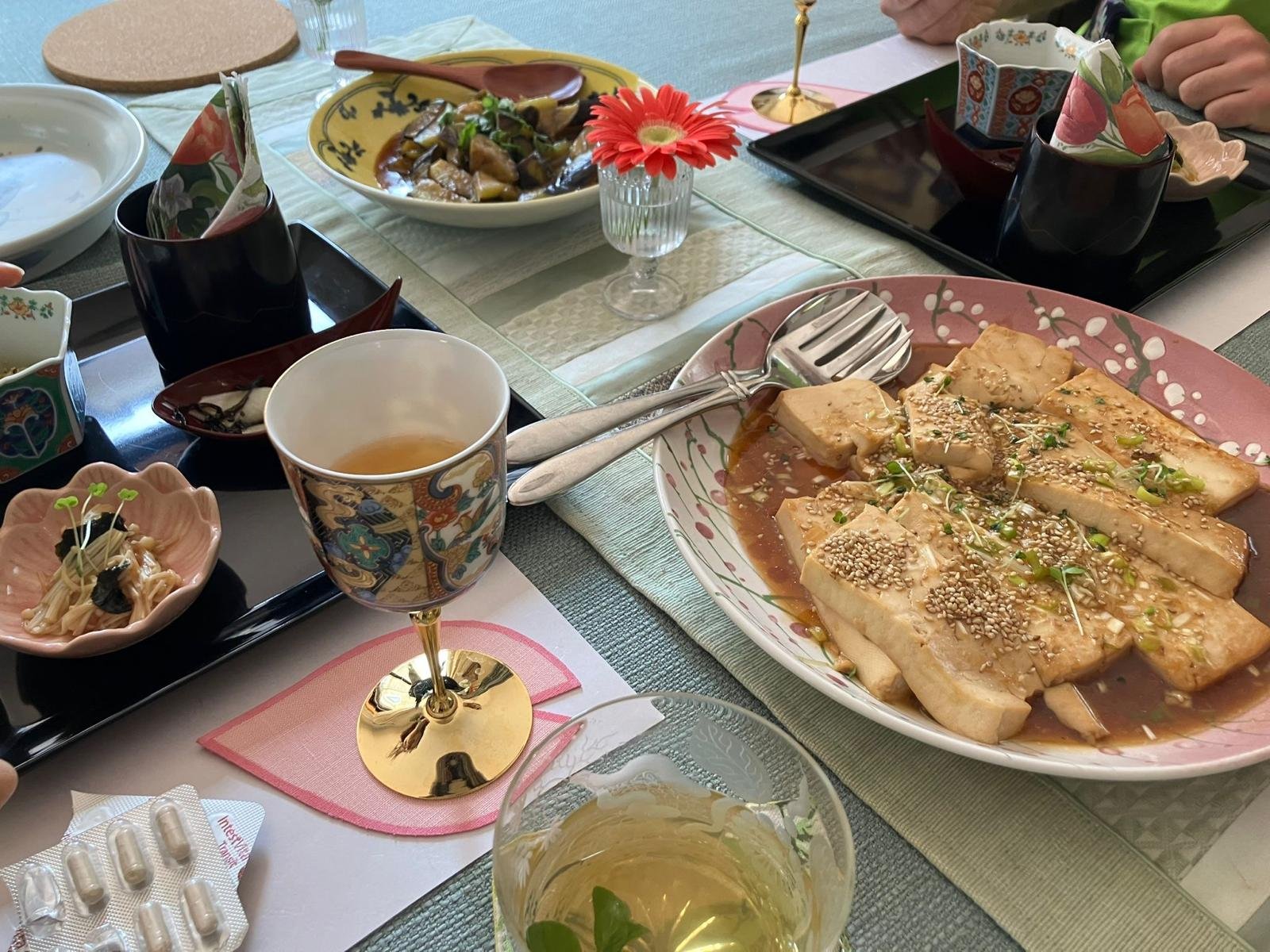Japanese Tableware and Food presentation-Japanese home private cooking class in Tokyo
Japanese Tableware and Food presentation(Fall Style)-Japanese home cooking
Japanese cuisine deeply values aesthetics, tradition,and seasonal sensitivity.It pays meticulous attention not only to flavoring and presentation but also to the dishware and overall setting.Among these elements,the "dishware" plays a particularly crucial role in its close relationship with the food.Let's delve a little into the relationship between Japanese cuisine and its dishware.Also, to learn practically, please join my Japanese home cooking class where you can experience authentic dishware and meals firsthand.
Please book from here.
Japanese tableware
Japanese tableware (日本の食器) is an essential element of Japan's traditional food culture. Here are the main types and characteristics of Japanese tableware:
Japanese tableware encompasses various vessels used in Japanese dining.
The most common types include:
Jaoanese bowl(お椀): Bowls used for soups and rice.
Plate (お皿): Flat plates for serving dishes.
Chopsticks(お箸): Chopsticks used as eating utensils.
Teacup(お湯呑み): Small cups for drinking tea.
Characteristics
Japanese tableware has several distinctive features:
Materials: A wide range of materials are used, including ceramics, porcelain, lacquerware, and wood.
Design: Many designs incorporate seasonal themes and nature motifs.
Functionality: Various shapes and sizes are available to suit different types of dishes and dining styles.
Selecting Tableware
Japanese Tableware and Food presentation(Spring Style)-Japanese home cooking
Reflecting Seasons and Occasions
In Japanese cuisine, it's essential to choose tableware that matches the season and occasion. For example, dishes with cool blue wave patterns are used in summer, while those with auspicious designs are selected for New Year's celebrations.
Color Harmony
In Japanese cuisine, the five colors of blue (green), yellow, red, white, and black (brown) are considered fundamental for plating. Selecting tableware with these colors in mind helps create overall harmony in the meal.
Importance of Negative Space
By keeping the amount of food modest in relation to the size of the dish and leaving 30-60% of the dish empty, a sense of elegance and beauty is created.
Plating Techniques
Ichiju-Sansai Principle
Traditional Japanese meals follow the "one soup, three sides" principle, with rice, soup, a main dish, and side dishes arranged appropriately.
Placement Rules
In proper Japanese traditonal table setting, rice is placed to the front left, soup to the front right, the main dish to the back right, side dishes to the back left, and pickles or dressed dishes in the center.
Plating Methods
Various techniques are used, such as radial arrangement or plating that complements the shape of the dish. These methods are employed to maximize the appeal of the food.
Harmony Between Dish and Food
Japanese Tableware and Food presentation(Winter Style)-Japanese home cooking
※Hand made Rolled Sushi by our guests
Concept of "Yorimono Chinsou"
It's important to understand the meaning behind each dish and select appropriate tableware. For example, special dishes are chosen to express the significance of New Year's foods like black soybeans or herring roe.
Creating "Scenery"
Japanese cuisine aims to create a "scenery" through the combination of food and tableware. By plating seasonal ingredients on beautiful dishes, visual enjoyment is provided alongside taste.Japanese tableware selection and plating are not mere decoration but are considered an integral part of the meal. By mastering the appropriate selection of tableware and plating techniques, one can enhance not only the taste but also the visual satisfaction of the dining experience.
In my Japanese home cooking class, I also provide advice on how to choose tableware. I would love for you to experience authentic Japanese cuisine together with me, where you can touch and feel real Japanese tableware.


